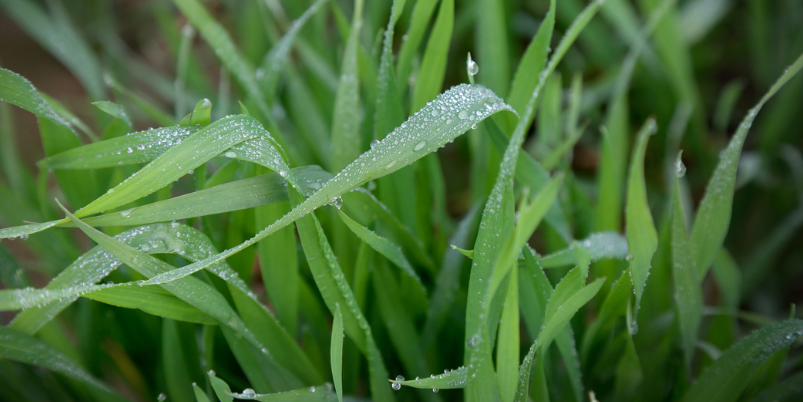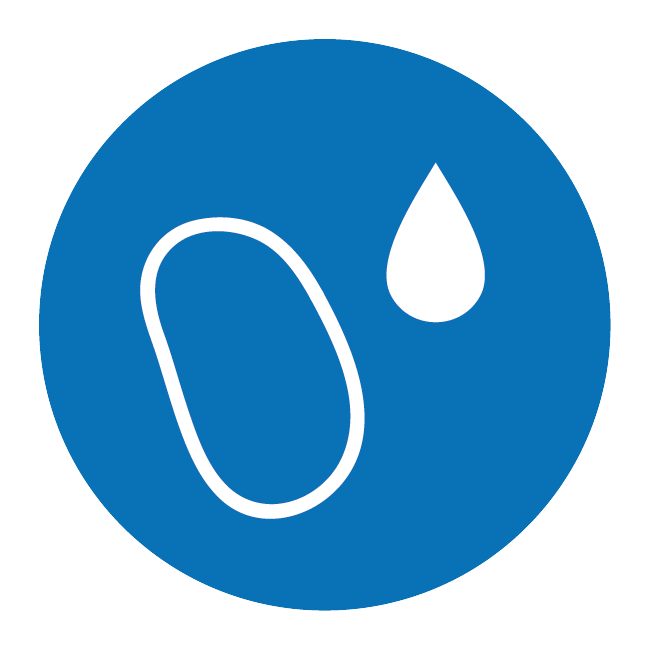Poor spreading restricts pesticide coverage on the leaf
Poor spreading restricts pesticide coverage on the leaf and this has implications for weed and disease control. Water beads on waxy surfaces, whilst tricky targets compromise spreading even further.
Whilst applying your crop protection sprays at the right time and rate is crucial, covering target plants is just as vital. Optimal coverage is crucial to lockout diseases and prevent weeds competing with the crop. The problem is, waxy plant leaves makes optimal spreading of even the best crop protection products an impossible task. You should check the accuracy of your application and take steps to improve it where necessary.
Potential impact of poor coverage:
- Gaps in protection will expose the crop to disease
- Insufficient coverage for contact herbicides to be effective
- Regrowth of weeds poorly controlled
- Repeat application adding more costs
Gaps in protection expose the crop to disease
Protectant fungicides can’t move on the leaf so you must ensure it covers the whole leaf surface to protect it.
If spray coverage is poor, the gaps in protection can be exposed to disease or pest attack.
Ear sprays can be particularly challenging targets due to the uneven irregular surface of the glumes and the thin size of the spikelets which are hard to coat with fungicide.


Insufficient coverage for contact herbicides to be effective
Contact herbicides must be able to spread out to be in maximum contact with the surface of the weed to work effectively, as they do not move within plants.
Poor coverage is even more problematic on hairy weed leaves. Leaf hairs suspend spray droplets above the surface preventing contact, which will cause them to bounce off the leaf.
You will get weed regrowth if herbicide coverage is inadequate
As weeds get larger the surface area of the weed also becomes greater and coverage across the whole weed becomes vital to prevent re-growth. With poor spreading, this is hard to achieve.


Water (95% of your spray solution) beads on leaf surfaces
Poor coverage is a symptom of high surface tension
Although water is a cheap carrier for your agrochemicals, it makes coverage difficult. Water beads on waxy surfaces and is prevented from spreading out due to high surface tension. This is because leaves are hydrophobic, meaning they repel water. This is due to the presence of a hydrophobic epicuticular wax on the leaf surface that causes low adhesive forces with water.
It means that unless you reduce surface tension between your spray solution and the leaf surface, coverage will be compromised.
Leaves which are particularly waxy will make spreading even harder e.g. fat-hen, oilseed rape, peas
Poor spreading on hairy leaves makes coverage even more problematic
Achieving effective coverage is even more difficult on plants with hairs. Hairy leaves cause water droplets to form perfect spheres that make them bounce/roll off easily, as a result of being suspended by the leaf hairs. There are many crops and weeds with small hairs on them:
- Brome, thistles, forget-me-knot
- Spikelets on wheat ears or barley awns are equally awkward
For this reason you could find optimal weed and disease control even more difficult so know your target:

Leaf hairs suspend spray droplets above the leaf surface preventing spreading and full contact across its surface

Water sensitive papers applied to wheat canopy during T2 fungicide application show poor coverage, especially on leaf 2.
How do you know if pesticide coverage is adequate?
You can measure coverage by placing small strips of water sensitive paper at different points within your target. If the cards have lots of droplets on them then coverage is probably adequate for that part of your target. If you can still see much of the yellow card, your spray coverage is likely to be insufficient and you should aim to improve it.
Optimise coverage with a tank-mix adjuvant
You can overcome high surface tension and droplet bounce using an adjuvant with surfactant properties (a surface acting agent), such as Kantor or Sorrento.
Surfactants reduce surface tension and the contact angle of droplets on the leaf surface, so your spray solution can spread out over a larger area of the leaf and be retained. This will optimise coverage and ensure your pesticide application is in position where it is needed.

Find out how tank mix adjuvants help


They’re not all muck and mystery! Master tank mix adjuvants and you’ll be able to select the right ones so you can push your pesticide performance to the max.
Learn more







